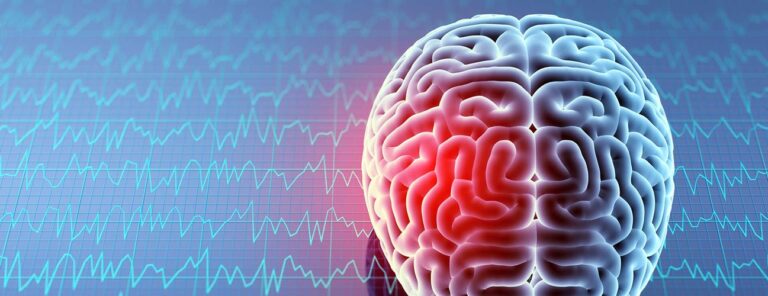A major illness that impacts millions of individuals worldwide is traumatic brain injury (TBI). TBI, which is defined as a brain injury brought on by an abrupt shock, blow, or impact to the head, can vary in severity from minor concussions to serious damage with long-term effects. Knowing the path from diagnosis to recovery can help one better understand the illness and emphasize how crucial prompt care and action are.
What Is Traumatic Brain Injury?
When an external mechanical force interferes with the brain’s normal function, traumatic brain damage results. The injury can result from incidents like falls, car accidents, sports injuries, or violent assaults. Depending on the degree of brain injury seen by medical imaging or physical symptoms, as well as the degree of consciousness impacted, TBI is usually classified as mild, moderate, or severe.
Mild TBI, commonly known as a concussion, often involves brief changes in mental status or consciousness. Severe TBI, however, can result in prolonged unconsciousness, amnesia, or significant cognitive and physical impairments that may require extensive rehabilitation.
Diagnosis Of TBI
A comprehensive study of the patient’s medical history, imaging testing, and clinical evaluations are all used to diagnose TBI. Physicians use tools such as the Glasgow Coma Scale (GCS) to assess a patient’s level of consciousness. A lower GCS score often indicates a more severe injury.
A critical role is played by imaging techniques, such as CT scans or MRIs, in the identification of structural harm to the brain, including swelling, bleeding, or fractures. Furthermore, neurologists may administer cognitive evaluations to assess memory, attention, and problem-solving abilities, particularly in cases of mild or moderate TBI.
A timely and precise diagnosis is essential to avoiding more issues. Patients’ chances of recovery might be greatly increased when prompt intervention guarantees that they receive the right therapy.
Treatment Approaches
The treatment for TBI depends on the severity of the injury. Mild cases typically involve rest, observation, and managing symptoms of a traumatic brain injury such as headaches or dizziness. Patients are often advised to avoid physically or mentally taxing activities until their symptoms subside.
Moderate to severe TBIs require more intensive care. In some cases, emergency procedures, such as surgery, may be necessary to relieve pressure on the brain or repair fractures. Critical care units provide monitoring and support to stabilize the patient and prevent secondary injuries, such as swelling or infection.
Especially for those with moderate to severe TBI, rehabilitation is essential to the healing process. A multidisciplinary approach is frequently used for this, with speech treatment to enhance communication skills, occupational therapy to restore independence in everyday tasks, and physical therapy to recover motor skills. In order to address the emotional and cognitive effects of TBI, psychological care is also crucial.
Recovery Journey
Recovery from TBI is a unique process that varies from person to person. The severity of the injury, the patient’s age, and their general health are some of the variables that affect how quickly and fully a patient recovers.
In many cases, the brain has a remarkable capacity to adapt and heal itself over time through a process called neuroplasticity. This allows undamaged parts of the brain to take over functions lost in the injured areas. Rehabilitation programs are designed to support and enhance this natural healing process.
For individuals with mild TBI, recovery may take days to weeks, and most return to their normal activities without significant long-term effects. However, severe TBI often requires months or even years of rehabilitation and adjustment. Patience and perseverance are essential, as progress may be slow but steady. At South Valley Neurology, patients with traumatic brain injuries receive comprehensive care, from accurate diagnosis to personalized rehabilitation plans, ensuring a supportive recovery journey.
Support Systems And Long-Term Care
The role of family, friends, and caregivers in supporting a person with TBI cannot be overstated. A strong support network helps the patient maintain motivation and stay engaged in therapy. Additionally, caregivers are essential in scheduling appointments, monitoring development, and making sure that medical advice is followed.
In cases of severe TBI, long-term care may be necessary. In order to guarantee that patients receive the assistance they require for their everyday tasks, this can involve assisted living facilities or in-home care services. You can click here to learn more about these options and how they can provide life-changing care for your loved one. Alongside this, advances in assistive technology, such as communication devices and mobility aids, have greatly improved the quality of life for individuals living with TBI.
Looking Ahead: Advances In TBI Treatment
The future of TBI treatment is promising, with ongoing research focusing on innovative therapies and technologies. For example, advances in regenerative medicine, such as stem cell therapy, hold the potential for repairing brain damage. Wearable devices and virtual reality are also being explored as tools to enhance rehabilitation and monitor recovery.
Public awareness campaigns and preventive measures, such as wearing helmets and using seatbelts, have significantly reduced the incidence of TBI. Continued emphasis on prevention and early intervention remains essential in addressing this complex condition.
Conclusion
Traumatic brain injury is a life-altering condition, but with proper diagnosis, treatment, and rehabilitation, many individuals can lead fulfilling lives. A comprehensive strategy, including medical treatment, rehabilitation, and steadfast support from loved ones, is necessary for the path from diagnosis to recovery. By understanding the challenges and embracing advancements in care, we can ensure that those affected by TBI receive the best possible outcomes on their road to recovery.
